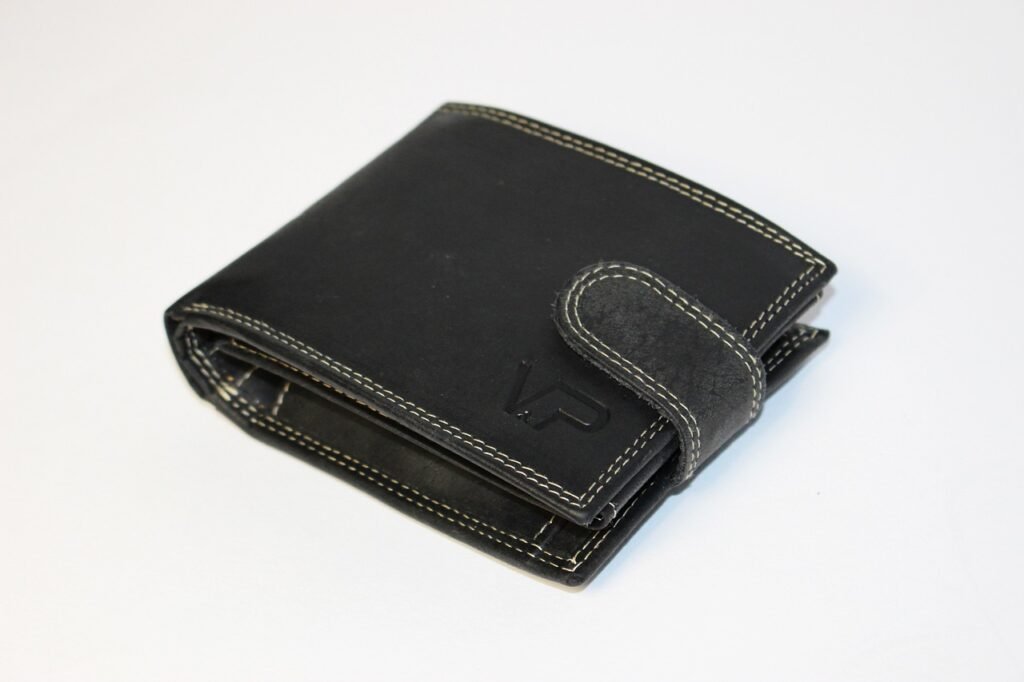Is your wallet showing signs of wear and tear sooner than you expected? Do you find yourself constantly replacing wallets due to damage or deterioration? With the right handling and maintenance techniques, you can significantly extend the life of your wallet and keep it looking its best for years to come. In this wallet maintenance guide, we’ll provide you with essential tips to enhance the durability of your wallet and ensure that it stays in top condition.

This image is property of pixabay.com.
Understanding Wallet Materials and Construction
Before diving into wallet maintenance tips, it’s important to understand the materials and construction of your wallet. Wallets come in a variety of materials, including leather, fabric, vinyl, and even metal. Each material requires different care techniques to ensure longevity and durability. Additionally, the construction of the wallet, such as stitching and hardware, can impact its overall lifespan.
Leather Wallets
Leather wallets are a popular choice due to their durability and timeless appearance. Genuine leather wallets, made from animal hide, can last for years if properly cared for. To maintain a leather wallet, it’s essential to regularly clean and condition the leather to prevent drying and cracking. Avoid exposing your leather wallet to excessive heat or moisture, as this can damage the material.
Fabric Wallets
Fabric wallets, such as canvas or cotton, are lightweight and easy to clean. However, fabric wallets are more prone to stains and wear compared to leather wallets. To keep a fabric wallet looking its best, spot clean stains with a mild detergent and water. Avoid putting fabric wallets in the washing machine, as this can cause the material to shrink or fade.
Vinyl Wallets
Vinyl wallets are an affordable and water-resistant option for those looking for a durable wallet. While vinyl wallets are easy to clean and maintain, they are prone to cracking and peeling over time. To prevent damage to a vinyl wallet, store it in a cool, dry place away from direct sunlight. Avoid using harsh chemicals or cleaners on vinyl, as this can weaken the material.
Metal Wallets
Metal wallets, such as aluminum or stainless steel, are incredibly durable and offer enhanced security for your cards and cash. Metal wallets are resistant to scratches and water damage, making them ideal for outdoor activities. To maintain a metal wallet, simply wipe it down with a damp cloth to remove dirt and debris. Avoid dropping metal wallets on hard surfaces, as this can dent or scratch the material.
Essential Wallet Handling Tips
In addition to understanding the materials and construction of your wallet, there are essential handling tips that can help extend its lifespan. Proper handling and care of your wallet can prevent unnecessary damage and ensure that it stays in excellent condition for years to come.
Avoid Overstuffing Your Wallet
One of the most common causes of wallet damage is overstuffing. If your wallet is bulging at the seams or difficult to close, it’s time to declutter and remove unnecessary items. Overstuffing your wallet can stretch the material, weaken stitching, and increase the likelihood of tears or rips. Keep your wallet organized by only carrying essential items, such as credit cards, cash, and identification.
Rotate Your Wallets
If you have multiple wallets in your collection, consider rotating them regularly to prevent excessive wear and tear on a single wallet. Switching between wallets not only extends their lifespan but also allows you to enjoy each one in rotation. By giving your wallets a break from daily use, you can prevent them from becoming worn out or damaged too quickly.
Keep Your Wallet Clean
Regularly cleaning your wallet is essential for maintaining its appearance and durability. Dust, dirt, and debris can accumulate inside your wallet, leading to stains and odors over time. To keep your wallet clean, use a soft brush or cloth to remove debris from pockets and crevices. For fabric wallets, spot clean stains with a gentle detergent and allow the wallet to air dry completely before use.
Store Your Wallet Properly
How you store your wallet when it’s not in use can also impact its longevity. Avoid leaving your wallet in direct sunlight or extreme heat, as this can cause the material to fade or crack. Store your wallet in a cool, dry place away from moisture and humidity. Consider using a wallet organizer or stand to keep your wallet upright and prevent it from getting crushed or misshapen.
Protect Your Wallet from Sharp Objects
Sharp objects, such as keys or pens, can easily damage the material of your wallet if not stored properly. Avoid carrying sharp objects in the same pocket or compartment as your wallet to prevent scratches or punctures. Consider using a separate keychain or pouch to keep sharp objects away from your wallet. If your wallet does get damaged by a sharp object, consider repairing it promptly to prevent further deterioration.

This image is property of pixabay.com.
Maintenance Techniques for Different Wallet Materials
Now that you have a better understanding of wallet handling tips, let’s explore maintenance techniques specific to different wallet materials. By following these care guidelines, you can ensure that your wallet stays in excellent condition and retains its original appearance for years to come.
Leather Wallet Care
Leather wallets require regular cleaning and conditioning to prevent drying and cracking. To clean a leather wallet, use a soft cloth dampened with water to gently wipe the surface. Avoid using harsh chemicals or cleaners, as they can strip the natural oils from the leather. To condition the leather, apply a small amount of leather conditioner or cream using a soft cloth and buff the wallet to restore its luster.
Fabric Wallet Care
Fabric wallets are easy to clean and maintain, making them a popular choice for everyday use. To remove stains from a fabric wallet, use a mild detergent diluted in water and spot clean the affected areas. Avoid scrubbing the fabric too vigorously, as this can cause damage to the material. Allow the wallet to air dry completely before using it again to prevent mildew or mold growth.
Vinyl Wallet Care
Vinyl wallets are resistant to water and stains, but they require regular maintenance to prevent cracking or peeling. To clean a vinyl wallet, wipe the surface with a damp cloth or sponge to remove dirt and debris. Avoid using abrasive cleaners or alcohol-based products, as they can damage the vinyl material. If your vinyl wallet starts to crack or peel, consider applying a vinyl repair kit to restore its appearance.
Metal Wallet Care
Metal wallets are incredibly durable and require minimal maintenance to keep them looking their best. To clean a metal wallet, simply wipe the surface with a damp cloth to remove fingerprints and dirt. Avoid using abrasive sponges or brushes, as they can scratch the metal finish. For stainless steel wallets, consider using a metal polish to restore shine and remove tarnish.
Repairing Wallet Damage
Even with proper handling and maintenance, wallets can still experience damage over time. From scratches and tears to broken hardware, wallet damage can detract from its appearance and functionality. By learning how to repair common wallet issues, you can extend the life of your wallet and avoid premature replacement.
Repairing Leather Wallets
Leather wallets are prone to scratches, scuffs, and tears, especially with regular use. To repair minor scratches on a leather wallet, use a leather conditioner or cream to buff out the imperfections. For deeper scratches or tears, consider taking your wallet to a professional leather repair shop for restoration. Avoid using super glue or tape to repair leather wallets, as they can cause further damage to the material.
Repairing Fabric Wallets
Fabric wallets can develop tears, fraying, or loose threads over time. To repair a fabric wallet, use a needle and thread to stitch up any tears or holes. For fraying edges, consider using fabric glue to secure loose threads and prevent further unraveling. If your fabric wallet has extensive damage, it may be necessary to replace it with a new one to ensure longevity and functionality.
Repairing Vinyl Wallets
Vinyl wallets are prone to cracking and peeling, especially with exposure to heat or sunlight. To repair a vinyl wallet, consider applying a vinyl repair kit to fill in cracks and restore the material. Follow the manufacturer’s instructions carefully to ensure proper application and adhesion. If your vinyl wallet has irreparable damage, it may be time to replace it with a new one to avoid further deterioration.
Repairing Metal Wallets
Metal wallets are durable but can still experience damage, such as dents or scratches. To repair a metal wallet, consider using a metal polish to buff out scratches and restore shine. For dented metal wallets, gently hammer the dent out from the inside using a soft hammer or rubber mallet. Avoid using excessive force, as this can cause further damage to the metal material.

This image is property of pixabay.com.
Conclusion
With the right handling and maintenance techniques, you can significantly extend the life of your wallet and keep it looking its best for years to come. By understanding the materials and construction of your wallet, implementing essential handling tips, and following maintenance techniques specific to different materials, you can ensure that your wallet stays in optimal condition. Remember to regularly clean and condition your wallet, avoid overstuffing and mishandling, and store it properly when not in use. By taking these steps to care for your wallet, you can enjoy its functionality and style for many years ahead.
